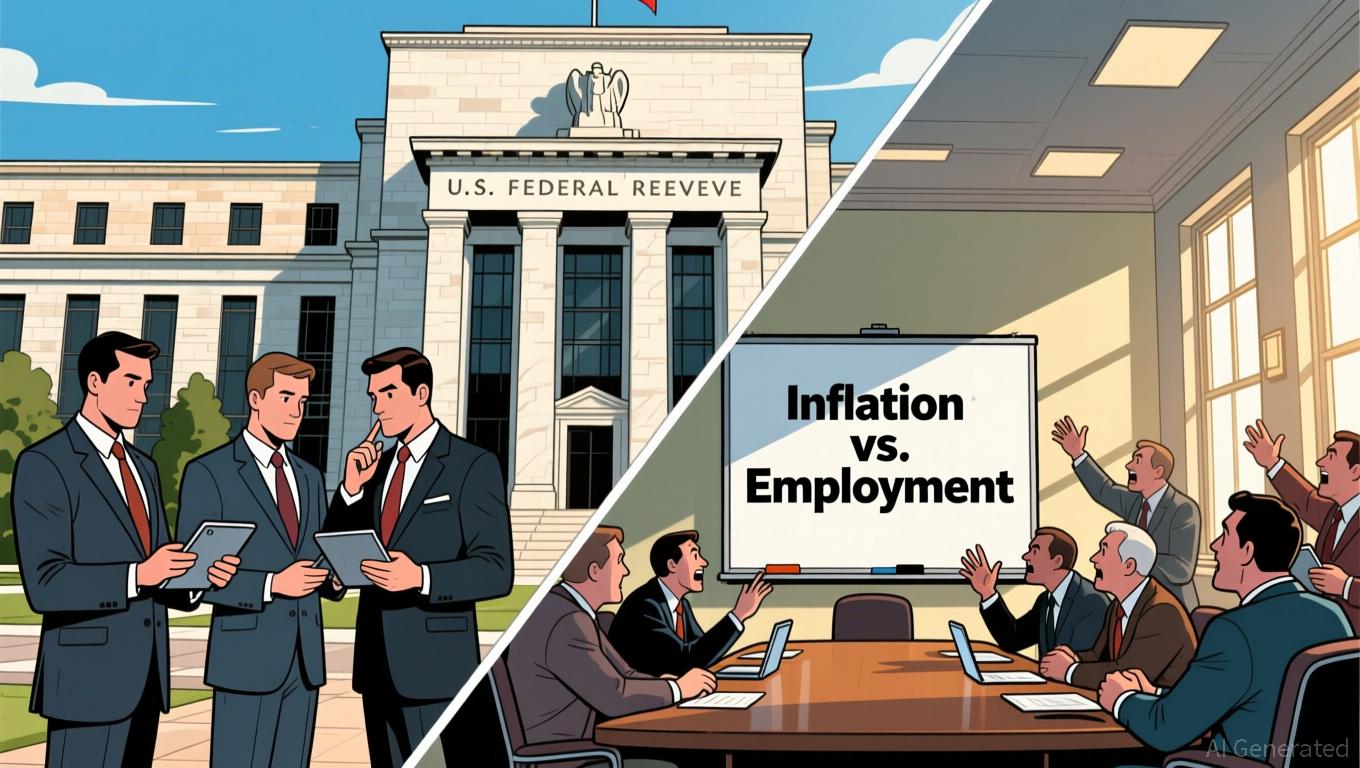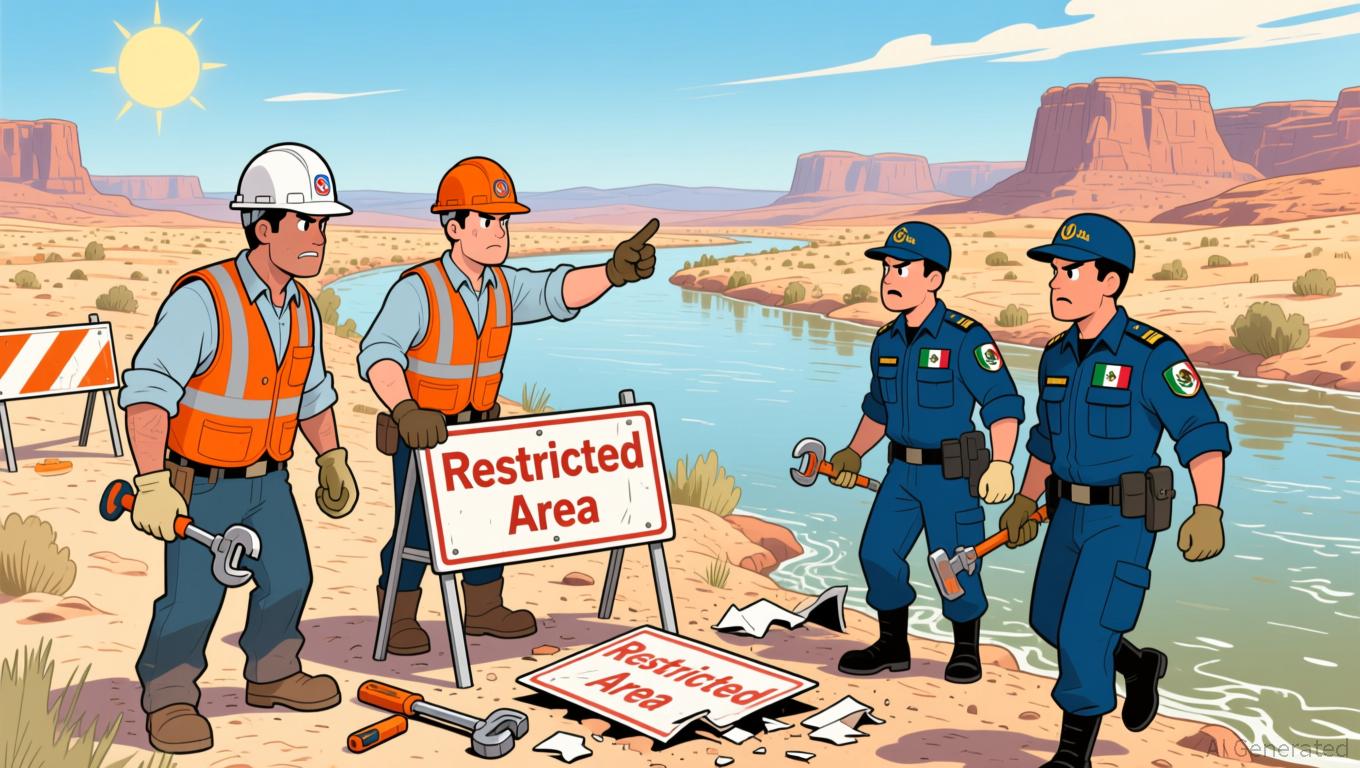Vitalik Buterin’s Latest Support for ZK Technology and What It Means for Blockchain Expansion
- Vitalik Buterin advocates ZK technology as Ethereum's solution to scalability-privacy challenges, highlighting ZKsync's 15,000 TPS Atlas upgrade as a key milestone. - He proposes removing modexp precompile to streamline ZK-rollups despite potential gas fee increases, emphasizing efficiency over technical complexity. - ZK-based assets like ZKsync and StarkNet gain institutional traction through interoperability, Bitcoin integration, and regulatory-aligned privacy solutions. - $55M Succinct Labs funding an
Buterin’s Support: Shaping Ethereum’s Path Forward
Buterin’s recent remarks highlight
Buterin’s vision is not limited to rollups. He has advocated for the elimination of the modexp precompile, a cryptographic function he claims
Additionally, Buterin sees ZK proofs as a supplement to other cryptographic solutions. In a recent blog entry, he
ZK-Oriented Assets: Market Dynamics and Institutional Growth
The rise of ZK-based crypto assets in 2025—ZKsync, StarkNet, and Aztec Network—demonstrates increasing institutional trust in Buterin’s direction.
ZKsync has taken the lead in both interoperability and efficiency. Its OS v0.0.5 update in Q3 2025 brought in correctness checks and technical improvements to lower technical debt, while
StarkNet has also advanced, especially in terms of
At the same time, Aztec Network has
Institutional Uptake and Prospects for Long-Term Investment
The pace of institutional adoption for ZK-based assets is picking up, fueled by both technological progress and key partnerships. For example, Succinct Labs
From an investment standpoint, ZK-based tokens such as STRK and ZKsync’s native token (though not directly named in the report) offer strong long-term potential. Their value is supported by:
1. Network Effects: Tools for liquidity sharing in ZKsync and the dual-token structure of StarkNet foster robust, self-sustaining ecosystems.
2. Regulatory Compatibility: Buterin’s push for ZK as a privacy-respecting solution fits with changing regulatory standards, easing the path to adoption.
3. Scalability: ZKsync’s 15,000 TPS milestone highlights ZK’s ability to match traditional financial networks, a vital factor for attracting institutional players.
Nevertheless, investors should exercise caution. The removal of the modexp precompile, while technically justified,
Conclusion: ZK as the Foundation for Strategic Investment
Vitalik Buterin’s backing has cemented ZK technology as a cornerstone in Ethereum’s ongoing transformation. For investors, the main insight is that ZK-based assets represent more than speculative plays—they are critical infrastructure investments. Projects like ZKsync and StarkNet, with their enterprise-level capabilities and Buterin’s technical endorsement, are poised to capture substantial value in the years ahead.
As blockchain moves from conceptual breakthroughs to real-world enterprise use, ZK-powered crypto assets stand out as prudent long-term holdings. Their capacity to balance scalability, privacy, and regulatory demands—key challenges for mainstream blockchain acceptance—makes them vital for the next stage of the crypto industry.
Disclaimer: The content of this article solely reflects the author's opinion and does not represent the platform in any capacity. This article is not intended to serve as a reference for making investment decisions.
You may also like
Fed Faces a Test of Trust: Managing Divided Rate Views and Ethical Controversies
- Fed's October rate cut revealed 10-2 policy split, balancing inflation risks against labor market weakness amid 2%+ inflation. - Ethics scandal emerged over Kugler's stock trades during blackout periods, triggering IG investigation and accountability concerns. - Political tensions intensified as Kugler's resignation accelerated Trump-aligned Miran's board seat, complicating policy governance. - December meeting faces uncertainty: some advocate 25-basis-point cut for labor support, while others warn again

Ethereum News Today: Ethereum Faces Liquidity Battle: Bulls Hold the Line at $3,100 While Bears Anticipate Further Drops
- Ethereum (ETH) struggles near $3,100 as traders monitor key liquidity zones amid 11% 7-day losses and cautious market sentiment. - ETF outflows ($74M for ETH, $373M for BTC) and institutional caution highlight waning investor confidence and liquidity challenges. - Technical analysts debate $2,904–$2,916 "buy zone" potential vs. bearish risks below $3,450, with consolidation phases expected before recovery. - Fed policy uncertainty (46% Dec rate cut chance) and EIL upgrades offer limited optimism as bears

Gundlach Cautions That Inflated Markets and Unstable Loans Could Trigger a Financial Crisis
- Jeffrey Gundlach warns U.S. equity market is "least healthy" and predicts private credit crisis due to "garbage loans" and weak underwriting. - He advises 20% cash allocation, reduced AI/data-center speculation, and compares private credit growth to 2006 subprime crisis, citing recent firm failures. - Recommends rebalancing portfolios: 40% global equities, 25% non-dollar bonds, and 15% gold as hedge amid dollar weakness and inflation. - Criticizes AI mania as "dot-com bubble" repeat, with NYU's Damodaran

Mexico Thwarts U.S. Cartel Raids, Cites 1848 Lesson on National Sovereignty
- Mexico's President Sheinbaum rejects Trump's cartel strike proposal, invoking 1848 sovereignty lesson to defend national autonomy. - Tensions escalate as Mexico removes U.S. contractors' "Restricted Area" signs near Rio Grande, citing border disputes and environmental concerns. - Trump's hardline drug rhetoric clashes with Mexico's sovereignty stance, highlighting strained U.S.-Mexico relations over border security and governance. - Sheinbaum balances U.S. cooperation with sovereignty defense, while Trum
